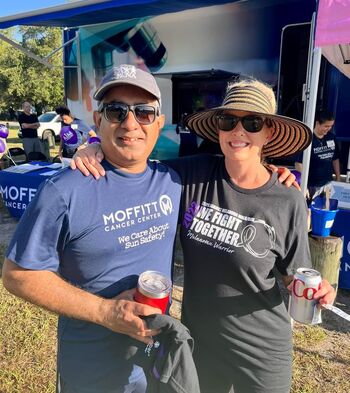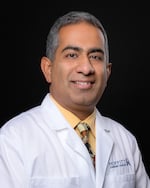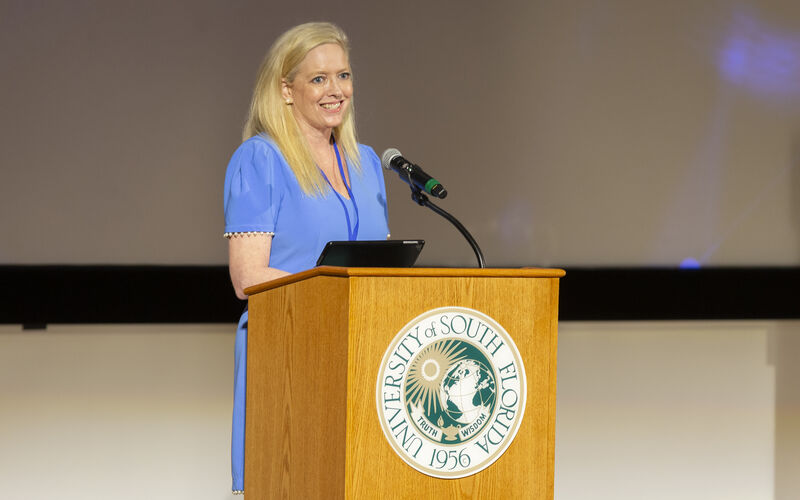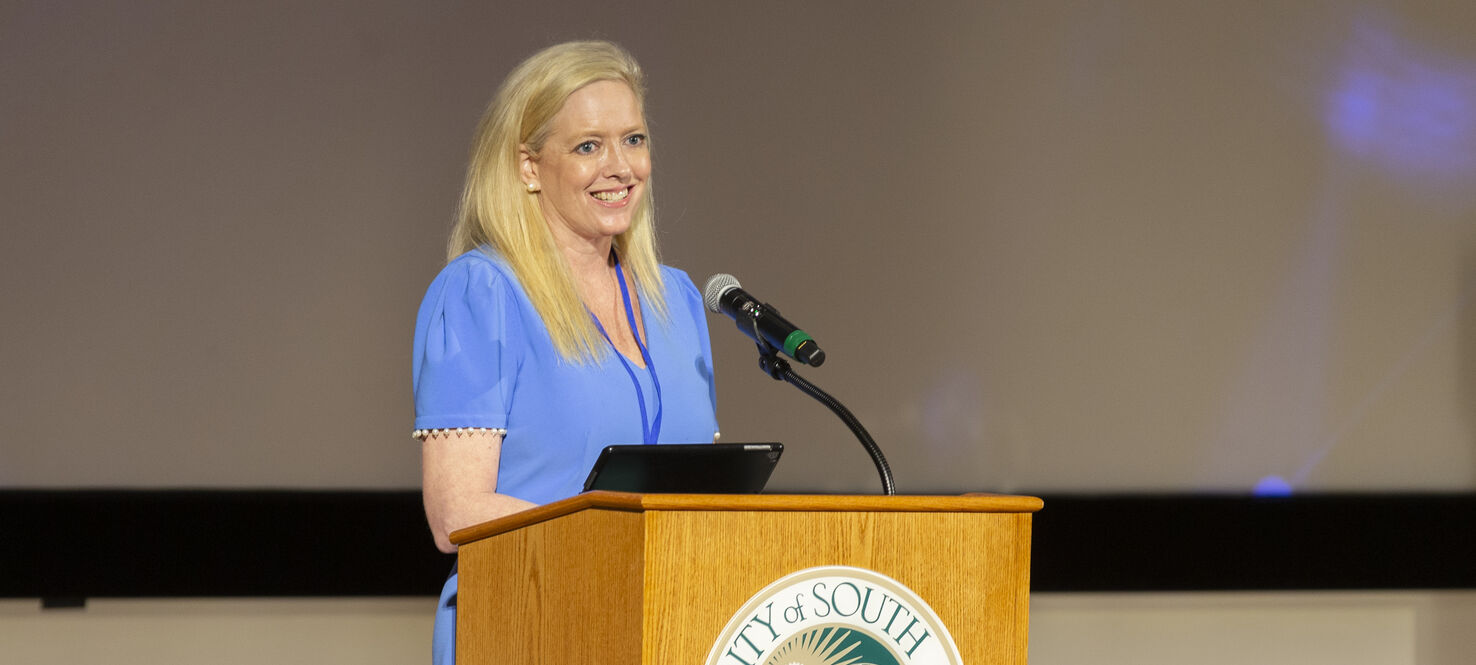From Diagnosis to Advocacy: Melanoma Survivor Shows Why Clinical Trials Matter
Mary Margaret Braddock grew up in Florida loving the sun. She spent her summers throwing cast nets, pulling crab traps and running on the beach.
“I had my back blistered every summer and my mom just threw on my dad's white t-shirt and threw me back out on the beach or that back out on the boat,” she said. “Our parents didn’t have the advantage we do to know the long term effects of sun exposure.”

Mary Margaret Braddock was diagnosed with stage 1B melanoma in 2016 at 40 years old.
She has no family history of skin cancer, but was diligent about her health and started getting annual skin checks when she was 27 years old. For more than a decade those checks turned up empty. In 2016, at age 40, her routine check revealed a suspicious mole on the back of her leg.
“My dermatologist took it off (for biopsy) and I was told it was probably nothing,” Braddock said. “Well if you get a call from the doctor three days later, it’s probably something.”
Braddock was diagnosed with stage 1B melanoma. She was referred to Moffitt Cancer Center for treatment.
Now 49, Braddock recently shared her story in front of a room filled with cancer researchers and clinicians at Moffitt’s annual Scientific Symposium. Her goal was to remind them of the person on the other side of their work.
“Just looking around that room and seeing the brilliance and the commitment to cancer provides me with so much hope,” she said. “You have no idea how significant that is from the other side.”
Nikhil Khushalani, MD, a cutaneous oncologist in the Donald A. Adam Melanoma and Skin Cancer Center of Excellence at Moffitt, has treated Braddock and many others like her. He said her case reflects both the complexity of melanoma and the power of today’s treatment options.

Braddock has chaired the Steps Against Melanoma walks the past three years.
“Melanoma can be a very heterogeneous disease,” Khushalani said. “Even though it is one term, it could actually be a subtype of varying diseases that behave in very different ways.”
Braddock’s early diagnosis in 2016 was classified as superficial spreading melanoma, the most common subtype.
“More than 97% of patients with stage 1 melanoma are cured with surgery alone,” Khushalani said. “She very appropriately got just surgery and continued with regular skin monitoring.”
For years, that was enough. But in 2022, Braddock discovered a lump in her groin. She returned to Moffitt, where she was diagnosed with stage 3B melanoma. The cancer had spread to her lymph nodes.
“I felt like I had been hit by a bus,” Braddock said. “But thanks to how far melanoma treatment had come, there was a trial available and it was ready for me.”
Less than two weeks later, she enrolled in a trial for patients with a BRAF mutation which involved a combination of two drugs aimed at shrinking her tumors before surgery.
“Our group has been strong proponents and pioneers in neoadjuvant therapy,” said Khushalani. “This is how the rest of the world treats patients now. I think we could argue that we were ahead of our time from that standpoint.”

The goal was to become a complete responder. Unfortunately she endured serious complications and spent more than 50 days in the hospital over several stays.
Despite the setbacks, her cancer responded to treatment and she had her lymph nodes removed. Her melanoma journey wasn’t quite finished though.

Today, Braddock is a patient grant reviewer for the Melanoma Research Foundation. Her advocacy has helped raise millions of dollars for cancer research.
In July, 2024 she had another recurrence. Braddock underwent two courses of combination immunotherapy. She tolerated it well and had another lymph node removed.
“I got the best news ever: I am currently a complete responder,” Braddock said. “And that is because of clinicians, researchers and pathologists. It’s because of people who choose cancer as their life’s work.”
Khushalani said Braddock’s determination, along with advances in immunotherapy, made that possible.
“Even though this is one disorder called melanoma, we now understand it’s a much broader bucket,” he said. “Each melanoma should be treated on its own merit.”
Today, Braddock is a passionate advocate for melanoma research. She reviews research grants, chairs awareness events for teens and recently traveled to Washington, D.C., to advocate for increased research funding.
“You might not see the significance of what you’re doing from a patient’s perspective,” she told researchers. “But from where I sit, it provides help on so many levels. Because of what you do, I’m still here.”




